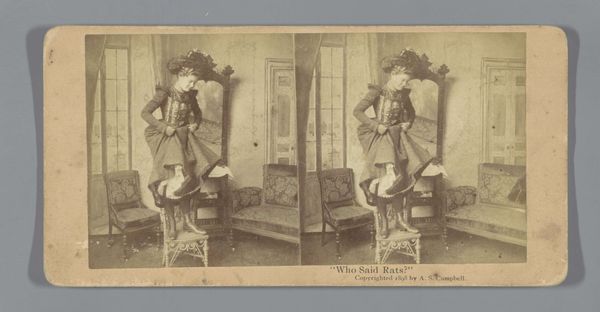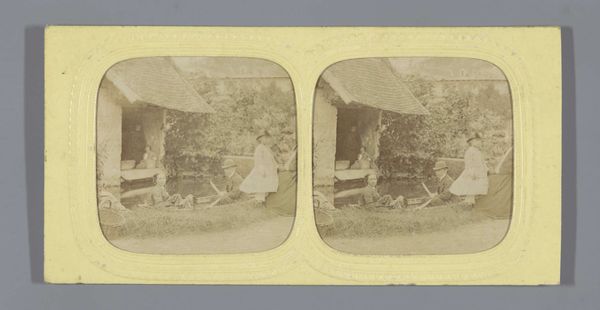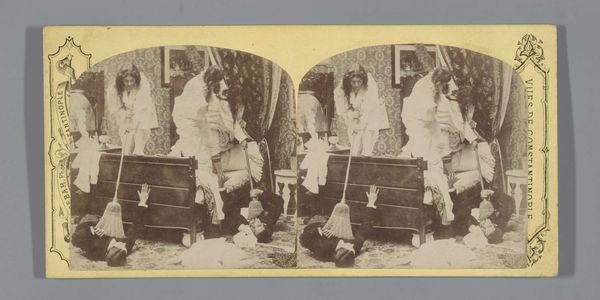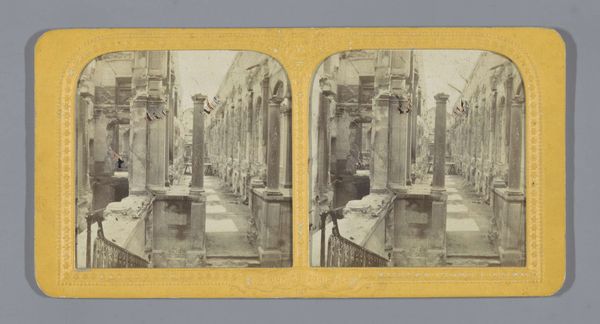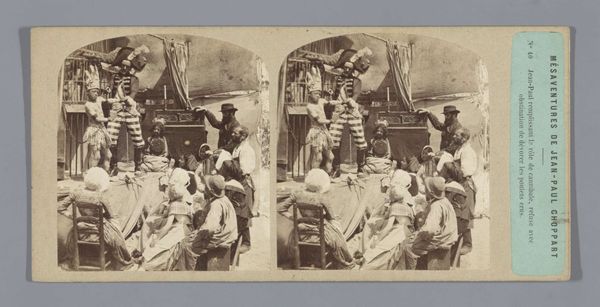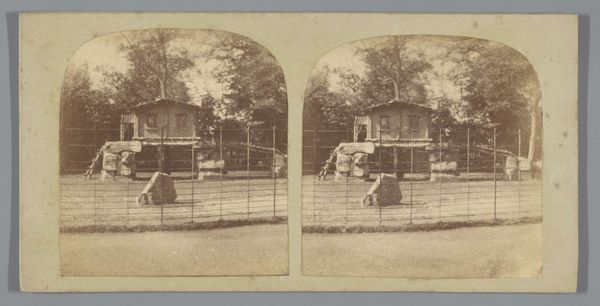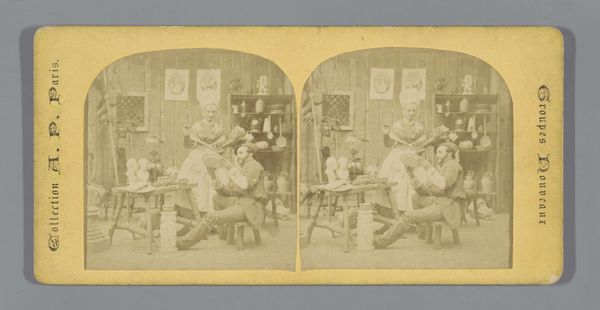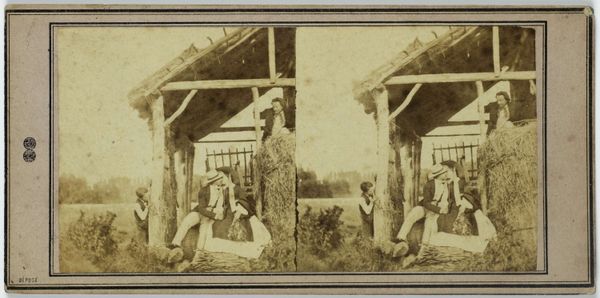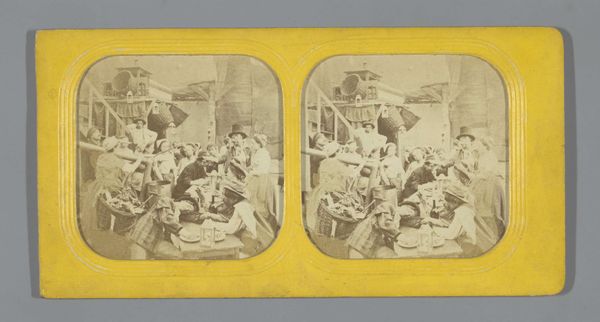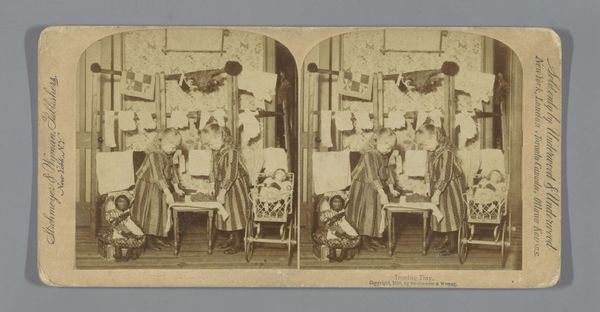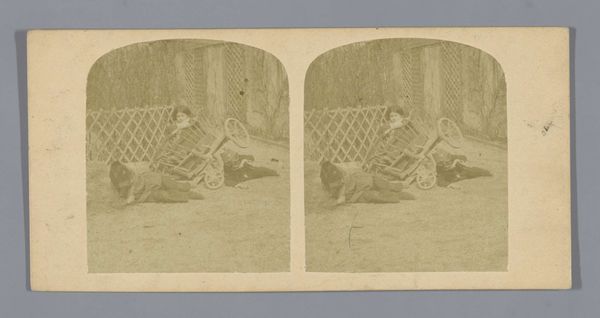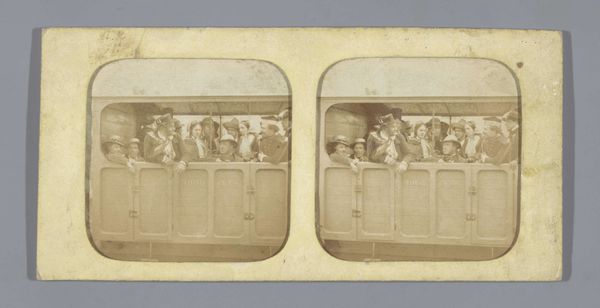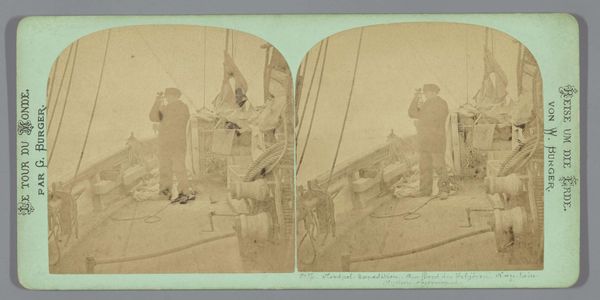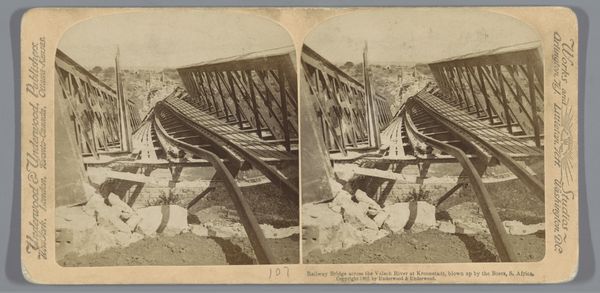
photography, albumen-print
#
portrait
#
paper non-digital material
#
landscape
#
photography
#
genre-painting
#
albumen-print
#
realism
Dimensions: height 86 mm, width 171 mm
Copyright: Rijks Museum: Open Domain
Curator: This albumen print, simply titled "Twee jongens werken in tuin," or "Two Boys Working in a Garden," dates to somewhere between 1855 and 1875. The anonymous photograph presents an interesting snapshot. Editor: It has a rather staged feel to it, doesn't it? Like a tableau. The soft sepia tones give it a sentimental air, though the subject matter… boys working, suggests something else entirely. What’s the story here? Curator: Well, considering the socio-economic conditions of the time, we must remember the prevalence of child labor. This image likely documents that reality, perhaps commissioned to depict children contributing to the household income. Note how their clothing is practical, and worn. Editor: So, it's not simply an innocent depiction of rural life but potentially speaks to a more complex issue: the commodification of labor and the vulnerability of children within those structures. I wonder who made this? I wonder what that photographer wanted to tell? The use of albumen on paper... I assume those materials speak to class as well. Curator: The process itself, using albumen from egg whites to bind the photographic chemicals to the paper, was a relatively accessible process. The accessibility of photography during this period, of course, created both new economic models and possibilities to picture social conditions. Editor: And I suppose it's those contrasting points – the harsh reality and accessibility for representation– that give the photograph its edge. How widely were images like this distributed, and who had access to them? It suggests both documenting a reality and perhaps promoting a social order, right? Curator: Images like these were circulated through stereoscopes, creating a kind of accessible entertainment while shaping societal perceptions. Editor: So, more than just art; it’s visual propaganda, in a way. Something mass-produced. It captures this singular moment, yet it was designed for mass consumption. Fascinating tension. Curator: Absolutely, and that is key to understanding the image and how it impacted the cultural perception of childhood and labor. Editor: A stark reminder that even seemingly bucolic images can be laden with complex socio-economic messages and serve broader societal purposes. Thanks.
Comments
No comments
Be the first to comment and join the conversation on the ultimate creative platform.
